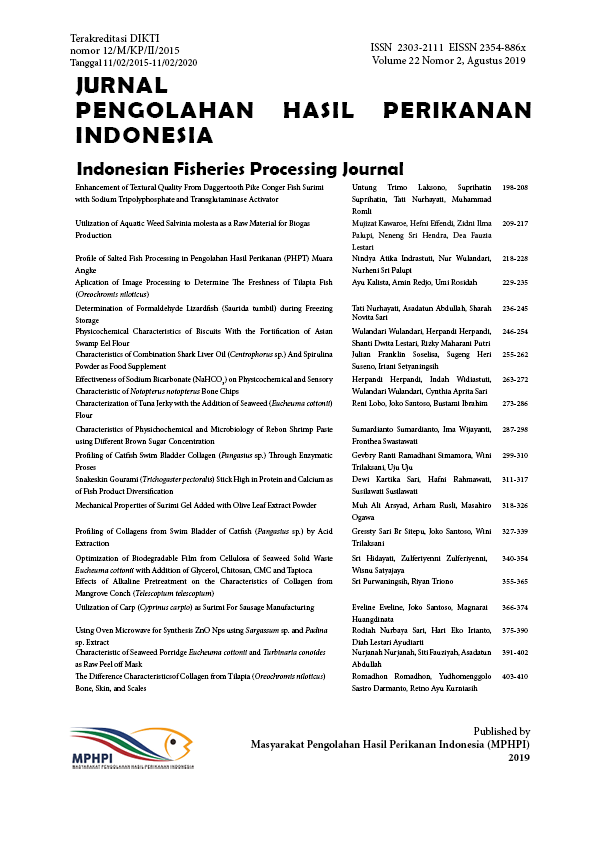Using Oven Microwave for Synthesis ZnO Nps using Sargassum sp. and Padina sp. Extract
Abstract
An oven microwave was established for synthesis of zinc oxide nanoparticles using Sargassum sp. and Padina sp. extract and 0.1 M ZnCl2 solution as a precursor. The ZnO nanoparticles had been characterized such as chemical structure by Fourier transform infrared (FTIR) spectroscopy, particle size distribution with Particle Size Analyzer (PSA), Scanning Electron Microscopy-Energy Dispersive Spectroscopy (SEMEDS) and crystalline properties with X-ray diffraction (XRD). The result showed that FTIR spectra revealed the involvement of hydroxyl groups and sulfate polysaccharide in the formation of ZnO NPs and protein was involved in stabilizing. PSA analysis showed that the size ranged of ZnO NPs extract Sargassum sp. synthesized 351,14 and 1.336.19 nm for extract Padina sp. The particle size distribution was homogeneous but their size hadn’t met the size of nanometers. The range of %mass elements Zn and O ZnO extract Sargassum sp. and Padina sp. synthesized didn’t approach standard ZnO. The crystallinity properties showed only ZnO extract of Padina sp. synthesized which had a peak with an angle value of 2θ was almost equal to standard ZnO and after confirmed to Match program! 3 crystal structure ZnO synthesized wasn’t imperfect hexagonal wurtzite. Ovens microwave could be used to synthesize ZnO from Padina sp. extract but it was still necessary to develop a method so that ZnO could be obtained with nanoparticle size and ideal hexagonal wurtzit structure.
Authors
SariR. N., IriantoH. E., & AyudiartiD. L. (2019). Using Oven Microwave for Synthesis ZnO Nps using Sargassum sp. and Padina sp. Extract. Jurnal Pengolahan Hasil Perikanan Indonesia, 22(2), 375-390. https://doi.org/10.17844/jphpi.v22i2.27834

This work is licensed under a Creative Commons Attribution 4.0 International License.
Authors who publish with this journal agree to the following terms:
- Authors retain copyright and grant the journal right of first publication with the work simultaneously licensed under a Creative Commons Attribution License that allows others to share the work with an acknowledgement of the work's authorship and initial publication in this journal.
- Authors are able to enter into separate, additional contractual arrangements for the non-exclusive distribution of the journal's published version of the work (e.g., post it to an institutional repository or publish it in a book), with an acknowledgement of its initial publication in this journal.





